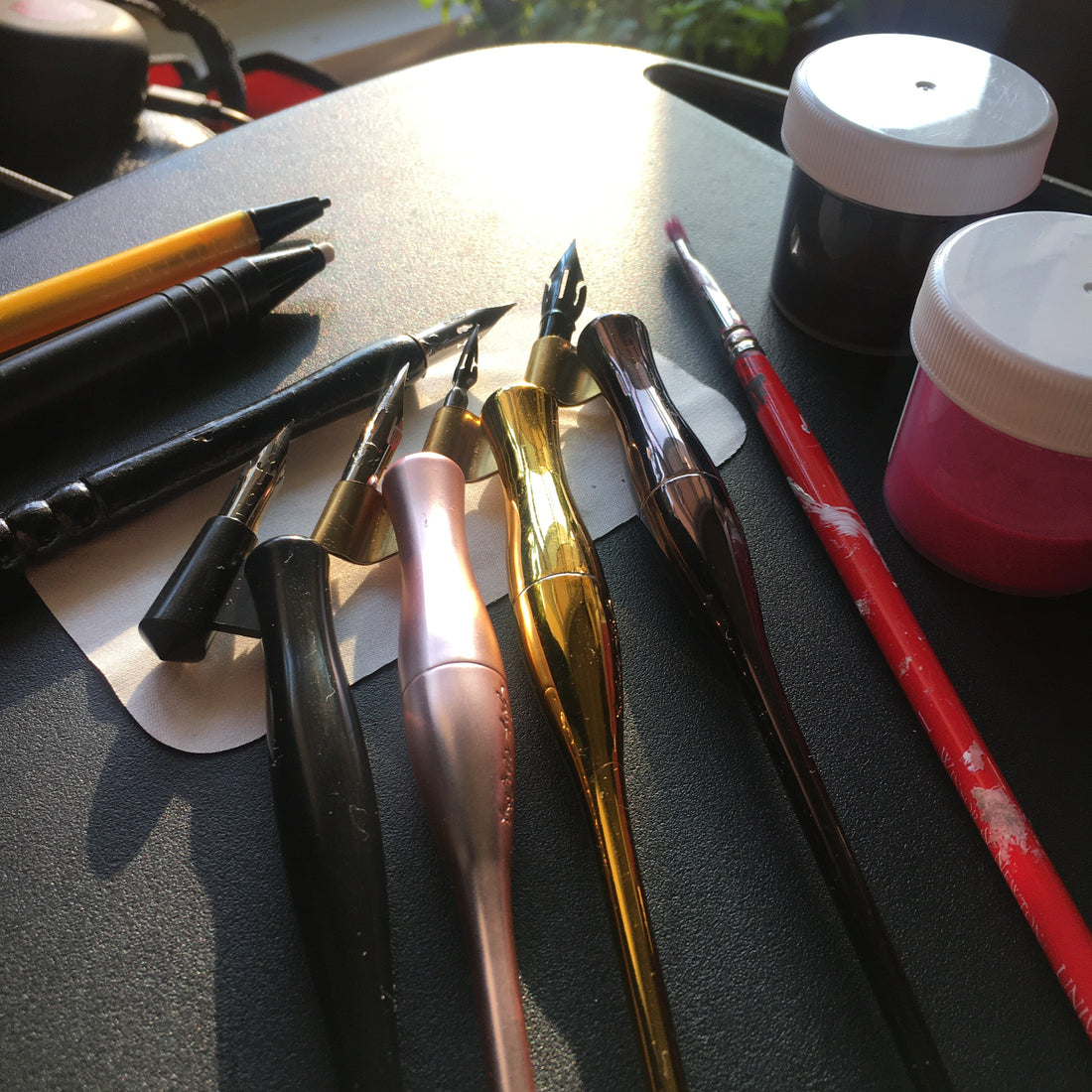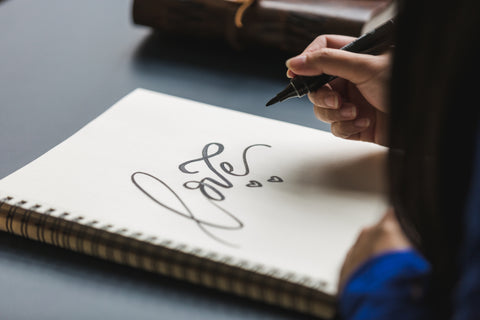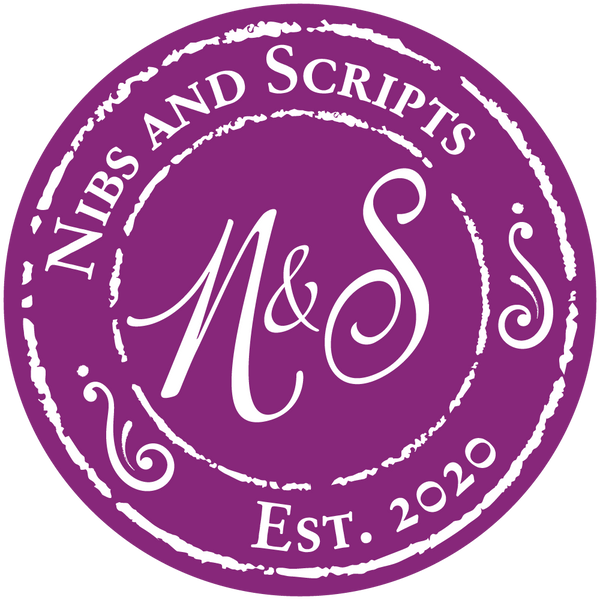
What's in a Nib?
Share
Ever wonder how this all works? Well, let me do my best to show you my world.
What is "calligraphy"?
At its core, 'calligraphy' is the art of the written word; with the use of a broad-tipped tool, brush or writing instrument, a calligrapher creates and designs a visual piece of lettering.
In the case of modern calligraphy practices, they flourish as wedding or event invitations, commissioned calligraphic art, greeting cards, personalized stationery, graphic design or memorial documents. And that's just the tip of the iceberg.
What are the "tools, brush or writing instrument" I'm talking about?

The most common tool for the calligrapher is the pen -- they come in a variety of forms:
- The dip pen - also known as a nib pen, metal-tipped, glass or pointed pen, this tool has two parts: the nib (writing tip) and the holder. It's the gold pen in the picture above. The pen holder can either be straight (usually preferred by lefties) or oblique (preferred by righties). The latter allows for a proper angle of the pen onto the paper.
- The ballpoint, the gel, the marker - while these don't normally contribute to the final product, they do give basis for faux calligraphy or providing the design template.
- The digital stylus - with the modern age, this also brought about digital calligraphy; artists can now access a mobile platform to showcase their art, alongside the traditional method.
- The fountain pen - the dip pen, without the dip; while these pens have a metal tipped nib, the ink is supplied by an ink chamber in the body of the pen and directed to the nib via a ribbed feed.
- The quill - the predecessor of the modern writing pen; a molted bird feather core is carved into a pointed end to dip into ink. Modern novelty versions have a ballpoint built in--like mine above.
What do you write on?
The most common is, you've guessed it, paper! My greeting cards are made of cardstock (a thicker type of paper than printer paper), but calligraphers are a creative bunch! If you can ink it, you can make calligraphy on such objects as:

- Glass/Plastic (mirrors, acrylic, windows etc)
- Wood (signs, table coasters, bookmarks)
- Paper goods (notebooks/pads, greeting cards, stationery sets)
- Fabric (linen, cotton, burlap)
- Rocks, yes, rocks! (agate, gemstone, stone)
Extra stuff?
You can't forget the accessories! Every calligrapher artist has a plethora of helper items to bring an idea into life:
- Ink! (Of course) - you can get them pre-made: sumi, walnut based dark inks, shimmering inks, or you can make your own: gouache, acrylic...the possibilities are endless!
- Inkwells - to hold above ink
- Paintbrushes - to clean or apply ink to your nib (for a less inky mess experience)
- Pencils, erasers, rulers - all to aid in preparing a sketch or layout before inking to the final product
So...What do I use?
Tools
- Pen holder - I use an oblique dip pen since I'm a rightie ;)
- Nibs (in no particular order) - Nikko G, Hunt 101, Brause Steno (aka 'Blue Pumpkin'), Brause EF, Apple pencil
- Ink - I make my own with some gouache paint diluted with water!
- Medium - Paper, iPad
Accessories
- Inkjars - repurposed from spice jars, mini samples
- Towels and rinsing water - it can be a messy space!
- A lightbox - a device that helps me overlay thicker paper on top of a guide page and still see through the thick paper.
- Tea - must stay hydrated for those writing sessions!
So now that you're all caught up,

